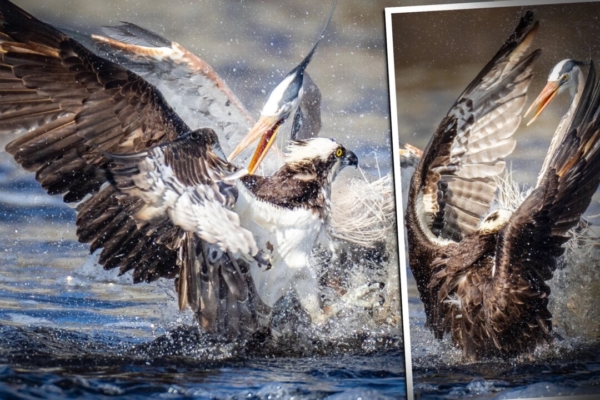Under the sparkling stars, a slender crescent moon still hung over the skies of New Jersey. James Sengul sat in his car, camera in hand, braving the early morning hours to drive two hours before sunrise to Union Lake Dam. He needed that precious twilight window to find the best spot for his photography.
He needed the backlight for his shots. The tides also meant this was a shallow area. And the stars of his photos – ospreys and great blue herons – could be feasting on fish migrating upstream from South America to cooler climates.
Mr. Sengul, 58, originally from Turkey, used to work as a sports photographer. His experience told him that all these factors coming together meant moments of spectacular activity would emerge on the water.
One can never predict what wildlife will bring. People didn’t expect to see images of them capturing prey, nor could they believe it. He knew that finding nature’s most hidden and awe-inspiring moments meant understanding who is hunting whom, what their habits are, and how to seize the opportunity at the right time and place.
He said it involved luck, but also sometimes creating your own luck.
On that day, Mr. Sengul had a feeling he would capture something special through his 600mm lens on a Sony A1. He arrived at the dam. As the sun rose, the ospreys became active.
“They have to travel quite a distance to get to New Jersey, so when they arrive, they hunt all day long. They hunt very actively,” he chuckled and added, “You can see them eat at least six or seven fish a day. Can you eat six or seven fish in a day?”
Around 7:30 am, the anticipated moment unfolded. He spotted a poised great blue heron on the left bank, indicating one party was trying to steal a meal at the cost of the other hunting fish. Does the osprey have food? Will the heron dare?
And in that instant, the great blue heron sprang into action. The osprey dove into the water, feathers flying, and splashes everywhere. Mr. Sengul opened his shutter at 30 frames per second, and three seconds later, it was over. He did not see what happened, nor did he know what his camera had captured.
“You are very eager,” he said, but ultimately, “when you don’t remember how you got those pictures, you got the best pictures.”
On that day, the great blue heron’s seafood feast chasing the osprey encountered razor-sharp claws and a curved beak ready to tear apart its prey. The heron gambled its life on a line. “The heron seized the opportunity. They are wild animals surviving in the outdoors, this is the best way to survive,” Mr. Sengul said, speculating on the heron’s thoughts: “I know the osprey has sharp claws, but I have to try.”
The osprey kept its prize. And the heron kept its life. Let us marvel at the spectacular drama hidden behind the curtain of nature.
Mr. Sengul’s job is to eagerly open nature’s windows and capture such moments. He is also happy to share with the world. But not everyone can do this. Because it takes time to predict what will happen, to follow nature’s rhythms with heart and mind, and to learn to intuitively feel nature’s beat.
Even being at the right place at the right time does not guarantee success.
“It’s like I was looking for other, better locations at that time, rather than in this direction,” he said, “If I had arrived five minutes earlier or later, I wouldn’t have seen this situation occur, which is very rare.”

